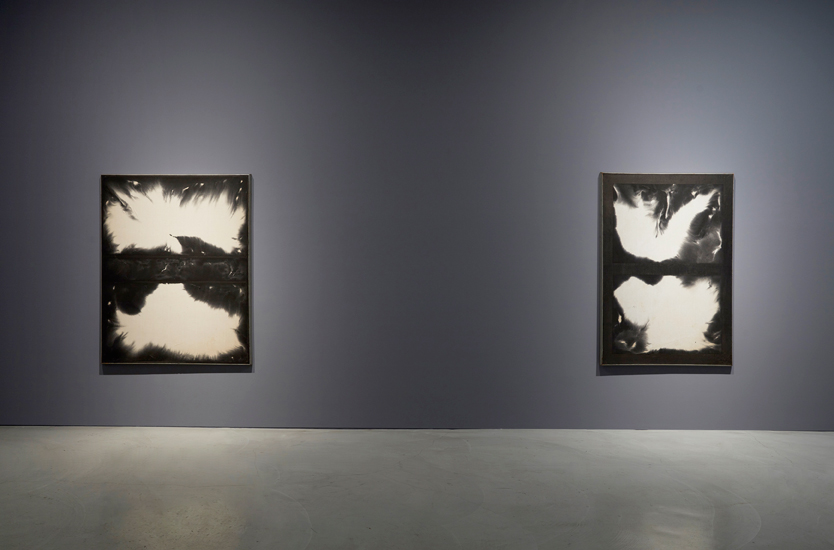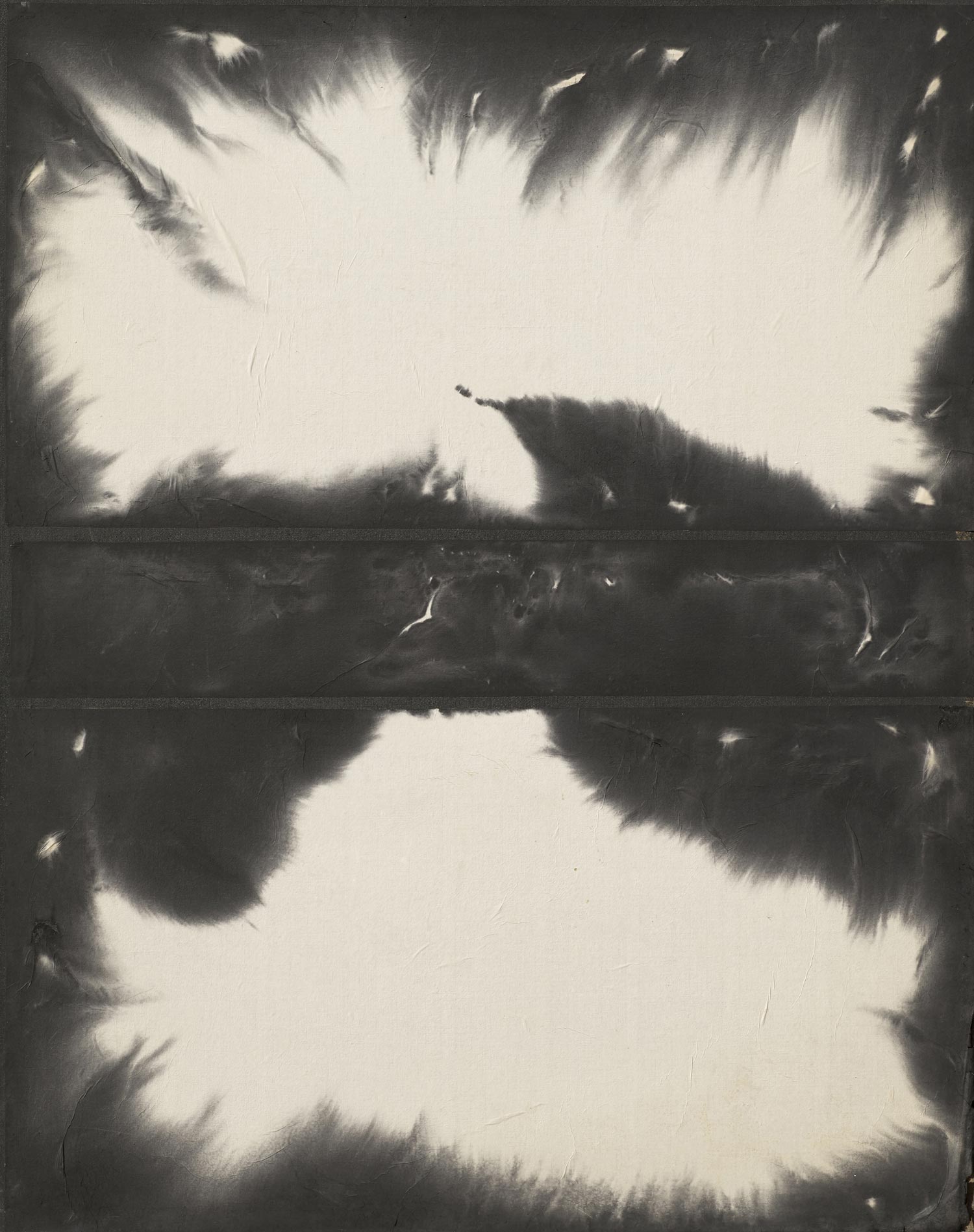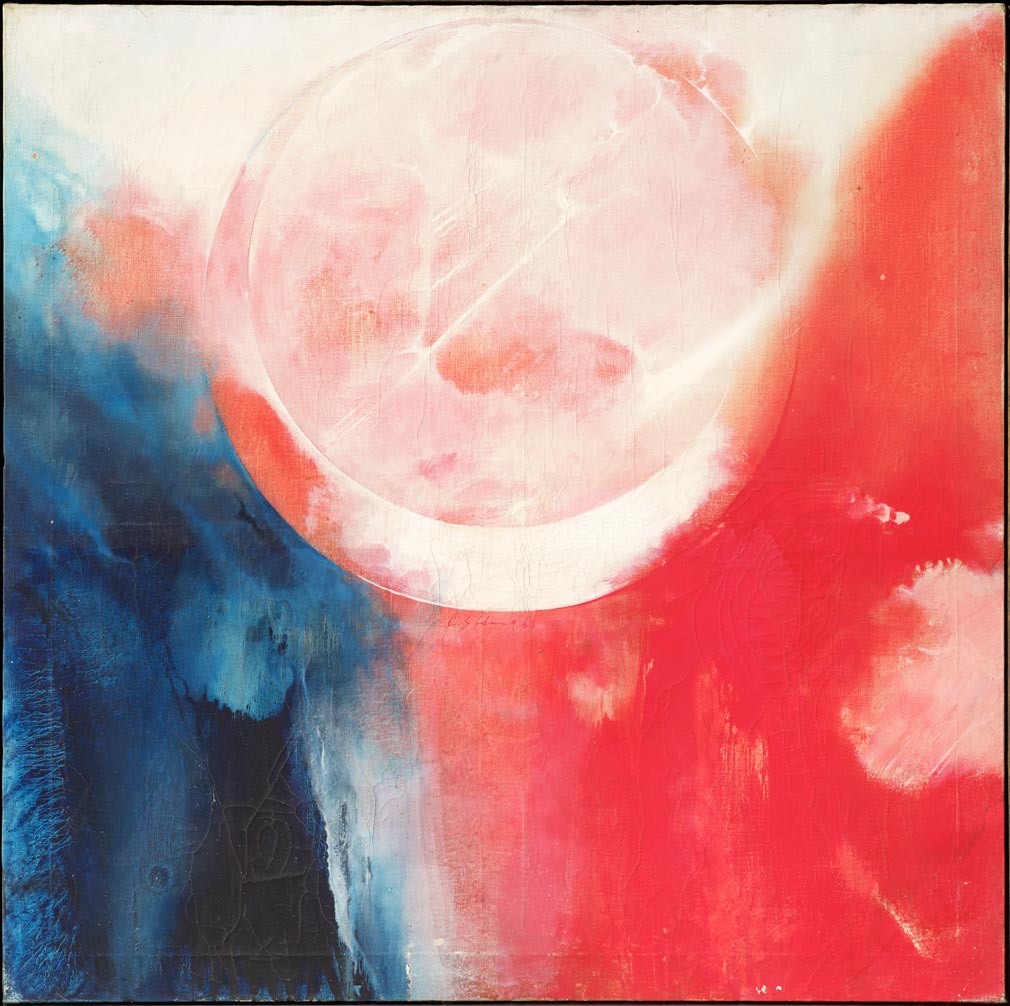Shows
"Chung Chang-Sup"



Born in 1927, the late Chung Chang-Sup was of the so-called “foundation generation” in Korea that not only bore the potential, but also faced the question of reestablishing the nation in the wake of Japanese colonization (which ended in 1945) and the Korean War (1950–53). The apparent task for Chung, a Seoul National University graduate, was to reinvent a national identity with his art, by creating a distinct Korean style. A survey of Chung’s 50-odd-year career was recently hosted at Seoul’s Kukje Gallery, which illustrated how his artistic awareness and brilliant sensibility, upon discovering the vehicle of hanji (Korean mulberry paper), came to deliver his captivating, signature monochrome works.
Kicking off the exhibition, in the first corner of Kukje’s K1 space, was an exquisite collection that demonstrated Chung’s search for his style, where a mixture of themes from within and without his home country could be found. Sympathy 33 (1968) is a tricolor composition in which an opaque, pearl-like white crescent is crowned over supporting column-like swaths of red and blue. While the vibrant dashes and the composition bring to mind early breakthroughs in abstract art, namely those of Kandinsky, the work’s sense of balance embodies more of an Eastern (Taoist) essence.
The work is also a clear allusion to the Korean flag, in which these three colors come to represent the harmony of earth, sun and the ocean. In two works from of the series “Traces of the Mind”—B (1958) and 64(1964)—Chung opted for anxious layers of impasto paint, which, again, bear the influence of contemporary post-war paintings, but rendered in his choice of earthly, crimson tone. Displayed as his final experiments were Work G77 andWandering 22 (both 1966), in which the artist set out to depict fume-like images made up of thin, floating layers of black paint. Notably, tension fills these works as eerie smoke appears to both reveal and conceal an apparition; in other words, Chung’s pigments seem to both permeate and hide into the canvases.
It was in the 1970s that Chung discovered hanji, perhaps as the embodiment of his above-mentioned dialectic impulse. In his “Return” series (from which works dated 1976 and 1977 were on display), Chung employed the semi-transparent medium to explore the dualism of light and darkness. Canvases layered with hanji are tinged with light black ink; the ink’s progression on the paper is imprinted so finely, to the extent that feather-like shapes of dyed threads appear at the edges, and, as a result, the canvas is charged with shining volatility. What is fascinating here is that Chung articulated hanji’s negative language, projecting lightness by soaking up darkness, in a manner similar to carving a relief.

Besides its charming negative language—a remarkable feature with regard to the practice of ink painting—the “Return” series is one consisting of transcendent, meditative works. At least for the Korean audience who are familiar with the common use of hanji as window paper, it is unmistakable what Chung intended when he utilized oblong canvases that are divided in halves. That is to say, the brilliance developed on the film-like hanji really comes from beyond the picture frame, shed onto the viewer standing in front. In one particular work, Return One-G (1977), an oval-shaped vision created by fine strips of fading black seems to actually resemble the perspective of the human eye, and thus draws the viewer to look in at it. Once attuned to the painter’s vision, the viewer comes to discover a dazzling light that is deeply comforting. Complementing the work, the gallery seemed to encourage viewers to contemplate beyond the “here and now,” as its walls were re-painted in a soothing yet somber grey tone.

It is also worth considering Chung’s black-and-white series in comparison to the style of Color Field painting of the 1940s and ‘50s, which, too, was prized for its meditative appeal. Chung’s “object art” as an outward-looking screen can be regarded as a breakthrough from Color Field painting’s artificial, flat color schemes that possess a strong gravitational impulse.
Moving on to the 1990s, Chung’s “Meditation” series, which were exhibited in the gallery’s more spacious K2 space, presented itself as a full-fledged articulation of hanji as a medium. Here, Chung’s art incorporates artisanship, in which works were the result of hanji production itself, comprising an arduous process of boiling and kneading processed dak (tree fiber) that was then applied onto a massive screen. As a result, the fiber texture that dried up on the canvas became visible; its rough matière with numerous little folds and blots bring to mind aged stones in 97302(1997) and fine sand in 21707 (2001). In a sense, these are sediments of sorts, given that they were created out of days-long preparation and through swift execution under challenging, time-limited conditions.
Chung continued to explore his “object art” by coming up with new ingenious presentations for his “Meditation” series. While the previous grid-like division in his works remained, some came to have a clean, square-shaped negative space in the middle demarcated by borders that left in the raw dak texture in the edges. Chung seemed to intentionally blur the frame that conventionally defines an artwork, or the border that divides art and object. In these works, viewers are led to muse on the two levels of frames—two realms of fine hanji and its raw materiality—finding themselves skipping amusingly from one to the other. One thing Chung did to exploit his medium, however, was to dye it in its preparation process in a range of colors. Certainly, Chung’s work offers the viewer a more delectable experience with his “Meditation” series, by presenting them with an oceanic blue (Meditation 91223, 1991) and soft charcoal (Meditation 97302, 1997) palette.
Chung’s exhibition capped the round of recent Dansaekhwa exhibitions at Kukje Gallery, which has featured other masters such as Lee Ufan, Kwon Young Woo and Ha Chong Hyun in the last two years. As the final edition of the series, and a fitting tribute to the late artist (who passed away in 2011), the show offered a succulent experience of Dansaekhwa art by encapsulating Chung’s oeuvre from genesis to full maturity, providing visual, tactile and imaginative gratification for the audience.
Chung Chang-sup’s solo exhibition was on view at Kukje Gallery, Seoul, from February 26th to March 27th, 2016.







